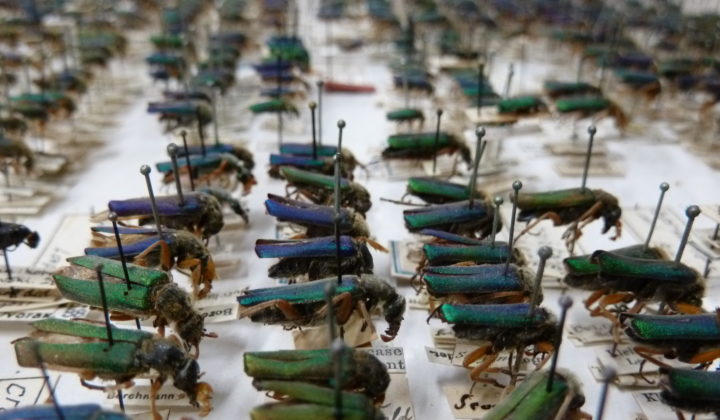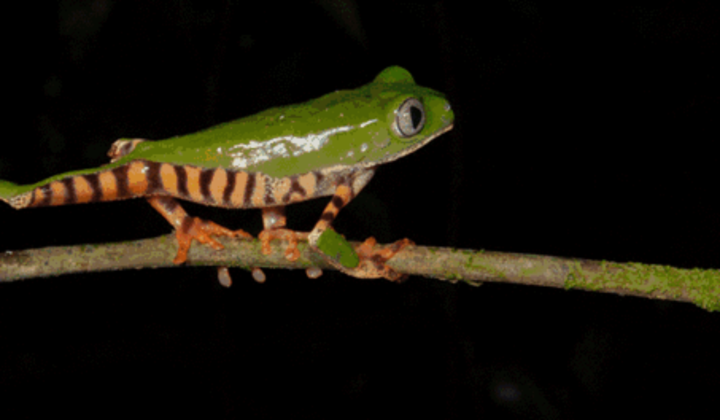Comparative Morphology of Female Genitalic Region in Insectia
The main research focus is the comparative morphology and evolution of the female postabdomen in insects. This most posterior part of the body includes the female genitalic region (bearing the ovipositor, if such a structure is present) and the postgenital abdomen (with, e.g., the cerci). Both the exoskeletal elements and the musculature are examined.
The female genitalic region is represented by the ventral sides of abdominal segments 7–9. It includes three major pairs of processes that form the ovipositor (gonapophyses and gonoplacs; or “valves”) and a number of sclerites with their mutual articulations. Internally the exoskeleton forms various apodemes, strengthening ridges, and pouch-like structures; the gonoducts, spermatheca, and accessory glands open in this area; and a complex musculature is also present. This highly complex body region shows much structural diversity across and within insect “orders”, but is still conservative enough to allow for homologising most components. This makes the female genitalic region a phylogenetically very informative character system. The postgenital abdomen is comprised of segments 10 and 11; characters of interest for phylogenetic work come, for instance, from the various small sclerites around the bases of the cerci and from the equipment with rectal and cercal muscles.
The morphological work on the postabdomen eventually aims at establishing a fully resolved homology scheme for sclerotisations, muscles, and cuticular form-giving elements (such as processes and apodemes; see illustration below). This will allow for the use of this character system in phylogenetic studies, concerning both inter-ordinal insect relationships as well as relationships within many orders. On this basis conclusions can then be drawn on evolutionary aspects of reproduction and egg deposition.
K.-D. Klass studied the female genitalic region in a variety of insect taxa. The first study treated the Dictyoptera (Klass 1998, Zoologischer Anzeiger). Important results were that the spermatheca is an element of the 8th abdominal segment, and the “laterosternal shelf” is a lobe on the hind margin of the 7th segment and thus a potential homologue of the “languette” lobe in Zygentoma.
The Dermaptera were studied in the second and third contributions (Klass 2001, Zoological Journal of the Linnean Society; Klass 2003, Entomologische Abhandlungen); the focus was on the epizoic genus Hemimerus and on 9 species of “basal” dermapterans (from Karschiellidae, Diplatyidae, and Pygidicranidae), respectively. These studies showed that in “basal” dermapterans an almost complete ovipositor is present, and that the morphology of the female genitalia is extremely diverse among the various genera.
The exoskeleton of the female genitalia of the newly discovered Mantophasmatodea was described in Klass et al. 2003, Entomologische Abhandlungen.
In 2008 a major paper on the female genitalic region in those Odonata that bear a plesiomorphic ovipositor was published (Zygoptera, Epiophlebiidae, and Aeshnidae; Klass 2008, Arthropod Systematics & Phylogeny). One striking result was the presence of a bipartite gonangulum in all of these Odonata – with the sole exception of Epiophlebia.
In 2009 a study of the exoskeleton (including gonoducts) in 5 species of Embioptera followed (Klass & Ulbricht 2009, Organisms, Diversity & Evolution).
Among the more recent studies, one treats a selection of “higher” Dermaptera (Schneider & Klass 2012, Zoologischer Anzeiger), including evidence of parallel evolution of (ovo)viviparity in different Spongiphoridae. The strongly depress earwig Apachyus is currently under study (Kaidel & Klass), as is the polyphagid cockroach Ergaula (Casper & Klass). A study of the female genitalic region in a petalurid dragonfly has been published (Matushkina & Klass 2011, International Journal of Odonatology), and another on 15 species of libellulid dragonflies is almost completed (Casper & Klass).
Another recent focus is on female genitalia in primarily apterygote insects: Zygentoma and Archaeognatha (Klass & Matushkina). This work is fundamentally important for providing sound outgroup comparison for Pterygota and thus to reach well-founded conclusions on the evolution of the female genitalia in this megadiverse group (comprising 99% of insect species). In a publication on the archaeognathan Petrobiellus(Klass & Matushkina 2012, Arthropod Structure & Development) the function of an external egg transportation tract was hypothesised.
The previous contributions include extensive homology discussions and comparisons throughout Insecta. Important topics concern, e.g., the morphological composition of the subgenital plates in the various orders and the shift of the gonopore from segment VII to segment VIII. The gonangulum sclerite (a multiarticulated sclerite functionally important for the coordination of gonapophyseal movements) and its phylogenetic evidence was discussed in a paper of its own (Klass et al. 2012, Arthropod Structure & Development). The comparative morphology of the postgenital abdomen was extensively discussed in the contributions on Hemimerus and Odonata, including the homology and morphological interpretation of the muscles moving the cerci and neighbouring sclerites.
Contributors from SNSD: Klass, Casper, Schneider, Kaidel, Schröter
External collaborators: Nataly Matushkina (National University of Kiev, Ukraine)


